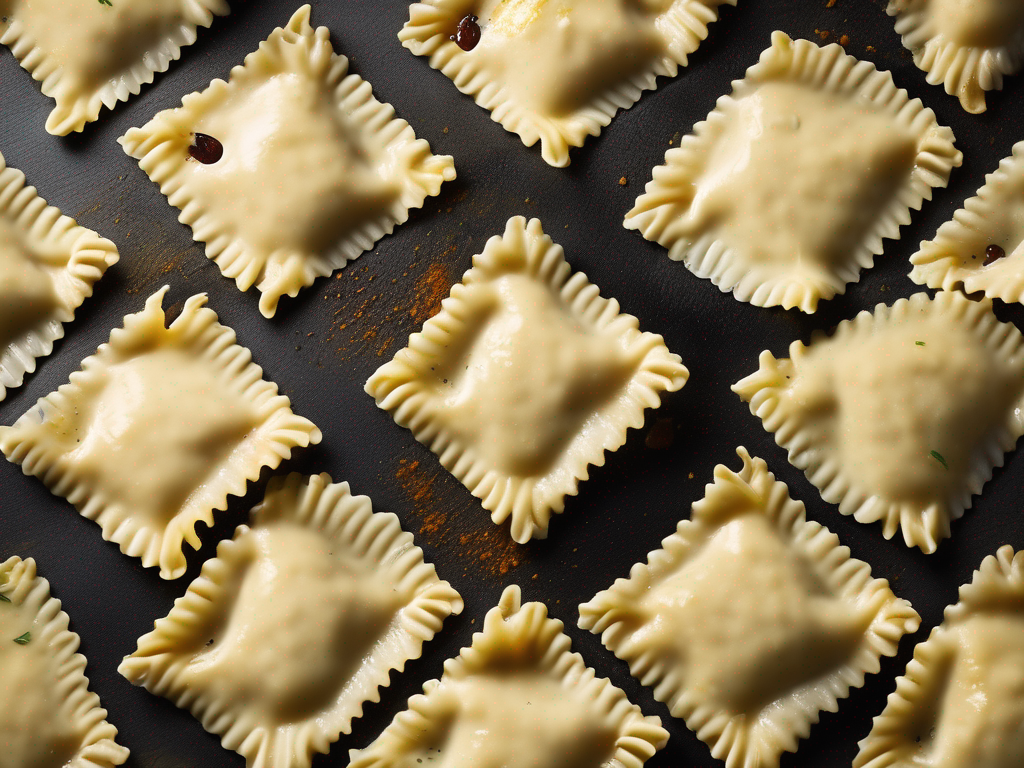
Safely Reheating and Enjoying Cooked Ravioli Leftovers
Get Your Free Food Safety Cheat Sheet
30 most common foods with instant answers. Print it and stick it on your fridge—completely free!
Safely Reheating and Enjoying Cooked Ravioli Leftovers
Are you a fan of delicious ravioli but often find yourself with leftovers? Knowing how to safely reheat and enjoy cooked ravioli leftovers is essential to prevent foodborne illnesses and maintain the quality of your meal. In this guide, we will explore the best practices for reheating cooked ravioli to ensure both safety and taste. (Cooked ravioli leftovers)
Understanding the Risks of Reheating Ravioli
When it comes to reheating cooked ravioli, it is crucial to be aware of the potential risks associated with improper handling and reheating methods. Here are some key points to consider:
Bacterial Growth
Cooked ravioli, like many other pasta dishes, can be a breeding ground for bacteria if not handled and reheated properly. Bacteria such as Staphylococcus aureus and Clostridium perfringens can multiply rapidly in cooked pasta that is left out at room temperature for too long.
Temperature Danger Zone
The temperature danger zone for food is between 40°F and 140°F (4°C and 60°C), where bacteria can grow rapidly. It is essential to reheat cooked ravioli to an internal temperature of at least 165°F (74°C) to kill any harmful bacteria present.
Storage Guidelines
Properly storing cooked ravioli leftovers is crucial in preventing foodborne illnesses. Ensure that leftover ravioli is promptly refrigerated within two hours of cooking and stored in airtight containers to maintain freshness and prevent contamination.
Safe Reheating Methods for Cooked Ravioli
Now that we understand the risks involved, let's delve into the safe reheating methods for cooked ravioli leftovers:
Microwave
- Place the cooked ravioli in a microwave-safe dish.
- Cover the dish with a microwave-safe lid or damp paper towel to retain moisture.
- Heat the ravioli on high for 1-2 minutes, stirring halfway through to ensure even heating.
- Check the internal temperature of the ravioli with a food thermometer to ensure it has reached 165°F (74°C) before consuming.
Stovetop
- Heat a skillet over medium heat and add a splash of water or broth.
- Add the cooked ravioli to the skillet and cover with a lid to trap heat and steam.
- Stir occasionally to prevent sticking and ensure even heating.
- Check the internal temperature of the ravioli with a food thermometer to ensure it has reached 165°F (74°C) before serving.
Oven
- Preheat the oven to 350°F (177°C).
- Place the cooked ravioli in an oven-safe dish and cover with foil to prevent drying out.
- Heat the ravioli in the oven for 10-15 minutes or until heated through.
- Use a food thermometer to check the internal temperature of the ravioli before enjoying.
Tips for Enhancing the Flavor of Reheated Ravioli
Reheating cooked ravioli can sometimes result in a loss of moisture and flavor. Here are some tips to enhance the taste and texture of your reheated ravioli leftovers:
- Add a splash of olive oil or butter to the ravioli before reheating to prevent dryness.
- Sprinkle freshly grated Parmesan cheese or chopped herbs over the ravioli for added flavor.
- Incorporate a creamy sauce or marinara to revive the flavors of the ravioli.
Conclusion
Safely reheating and enjoying cooked ravioli leftovers is not only essential for food safety but also for preserving the quality and taste of your meal. By following proper reheating methods, storing leftovers correctly, and incorporating flavor-enhancing tips, you can savor your ravioli without compromising on safety or taste. Remember, when in doubt, throw it out, and always prioritize food safety when handling leftovers. Enjoy your reheated ravioli with peace of mind and a satisfied palate! (Cooked ravioli leftovers)
Authoritative Food Safety References
These agencies and university labs inform every tip and health precaution we publish.
USDA FoodKeeper – Cold Storage Guidelines
Official refrigerator, freezer, and pantry timelines maintained by the U.S. Department of Agriculture.
Visit USDA FoodKeeperFDA Produce Safety Rule & Grower Guidance
Field-to-fridge handling practices that prevent contamination of fruits, vegetables, and leafy greens.
Visit FDA Produce SafetyCDC Foodborne Illness Prevention Hub
Surveillance-backed guidance on pathogens, symptoms, and steps to reduce foodborne illness risk.
Visit CDC Food SafetyUC Davis Postharvest Technology Center
University research detailing optimal storage atmospheres for produce after harvest.
Visit UC Davis PostharvestPenn State Extension – Home Food Preservation & Safety
Peer-reviewed extension bulletins on safe canning, chilling, and reheating practices.
Visit Penn State ExtensionGet Your Free Food Safety Cheat Sheet
30 most common foods with instant answers. Print it and stick it on your fridge—completely free! Want more? Upgrade to the complete guide with 70+ foods.
Scan your food directly and get instant safety info using our AI-powered camera feature.